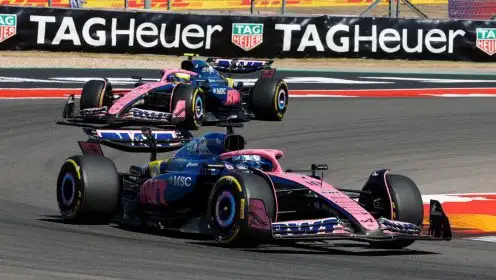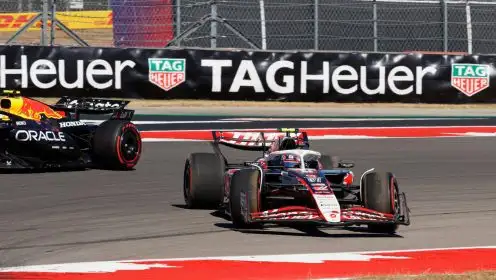Revealed: How Max Verstappen was helped by Leclerc-Norris battle
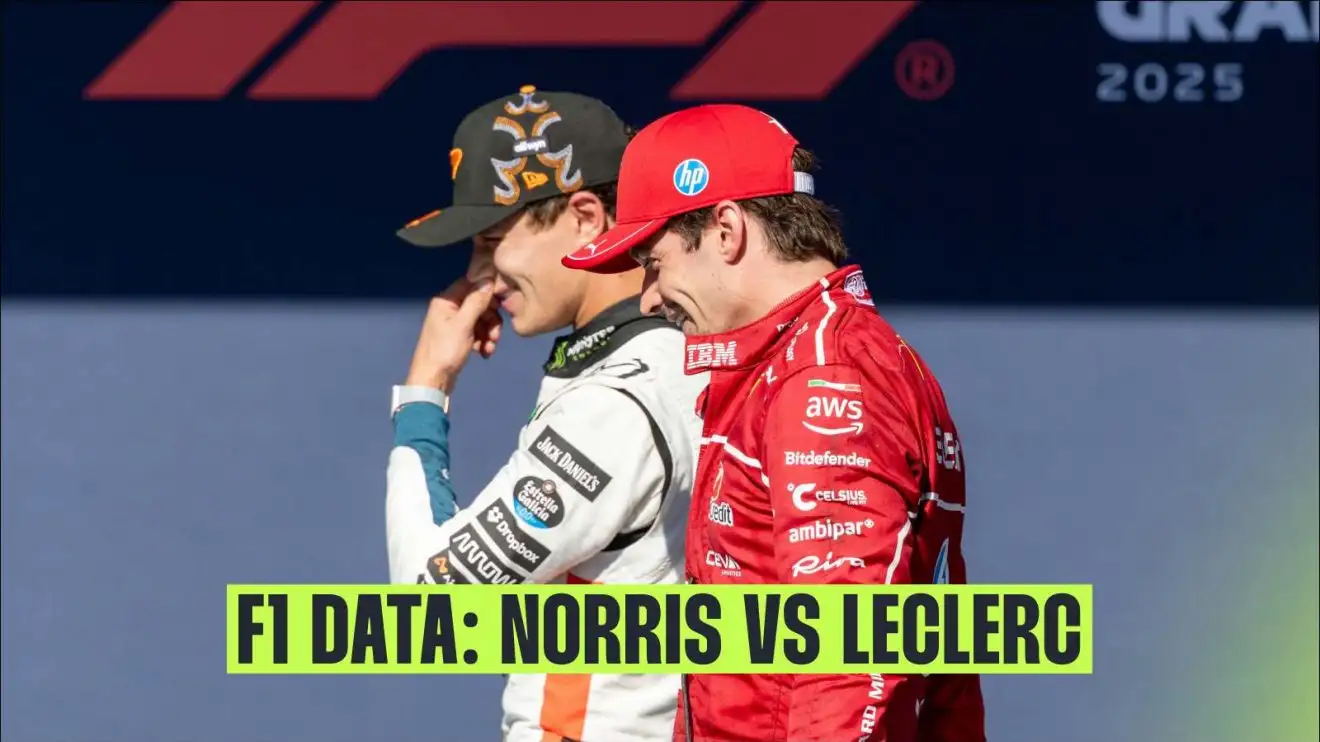
Charles Leclerc and Lando Norris did battle in Austin.
After several street circuits, the United States GP finally delivered the kind of proper on-track racing we’ve been waiting for — this time between Charles Leclerc and Lando Norris for P2 and a set of crucial points in the championship fight.
Did Leclerc get the maximum out of his Ferrari and could Norris have fought for the win with a different strategy? Let’s break it down with the help of telemetry data.
Was Lando Norris’s start the key to losing the chance for the win?
Although Norris has built a bit of a reputation throughout his career for weak race starts, this time it was Leclerc’s fantastic launch that cost him the position. The Ferrari driver lined up P3 on the grid as the only one among the top 15 runners starting on soft tyres, while all the others opted for mediums.
That strategic call paid off. By taking a wide line into Turn 1, Leclerc was able to use the extra grip from the C4 compound to sweep around the outside of Norris. Lando, it seems, was paying a bit too much attention to Verstappen ahead and a potential fight for P1, and not quite enough to the Ferrari behind him.
Leclerc even tried to grab the lead from Max — as he and his team had planned at first — but Verstappen was simply too quick. Within a few laps, the Dutchman had built a safe gap and controlled the pace in clean air.
More from the 2025 United States Grand Prix:
👉 Your questions, answered: What the Apple F1 deal means for American fans
👉 F1 makes huge United States Grand Prix announcement
Meanwhile, the fight between Norris and Leclerc was far from over. The McLaren clearly had the better race pace, especially after a few laps when the Ferrari’s soft tyres started to lose their initial advantage.
From lap 15 to lap 21, we witnessed a genuinely great on-track battle and some brilliant defending from the Monegasque. Norris was mostly setting up his attacks after the DRS zone into Turn 12, trying the classic switch-back move. But the problem with that tactic at this point of the circuit is simple — the two following corners after T12 are both right-handers, meaning Leclerc still held the inside line, making it easier for him to defend.
Norris tried the same tactic several times, and Leclerc always had an answer — right up until lap 21, when the Briton finally grabbed P2 before the potential corner action.
This lengthy battle played perfectly into Verstappen’s hands. Running in clean air, with no pressure behind, he stretched his lead to over 11 seconds.
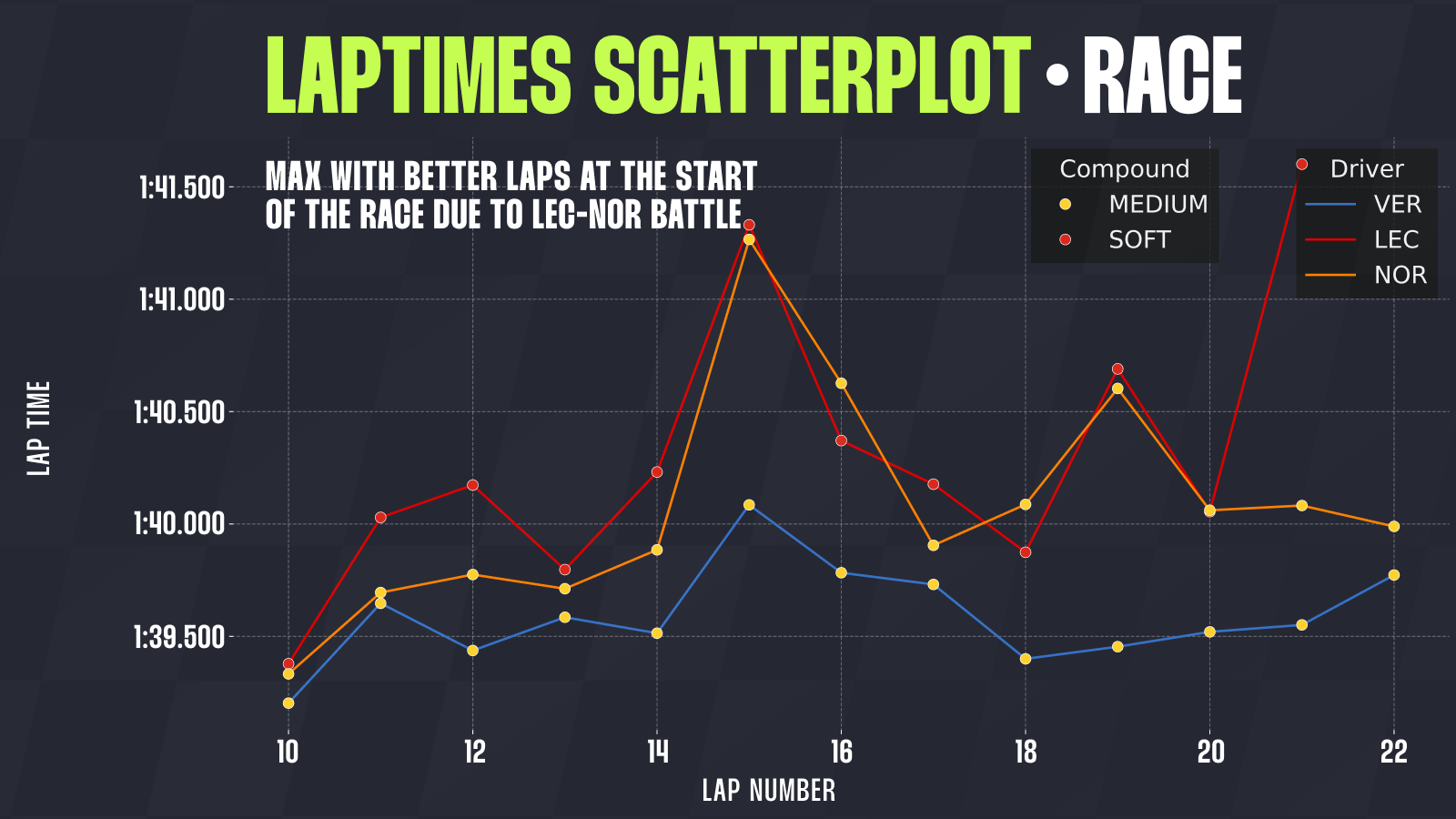
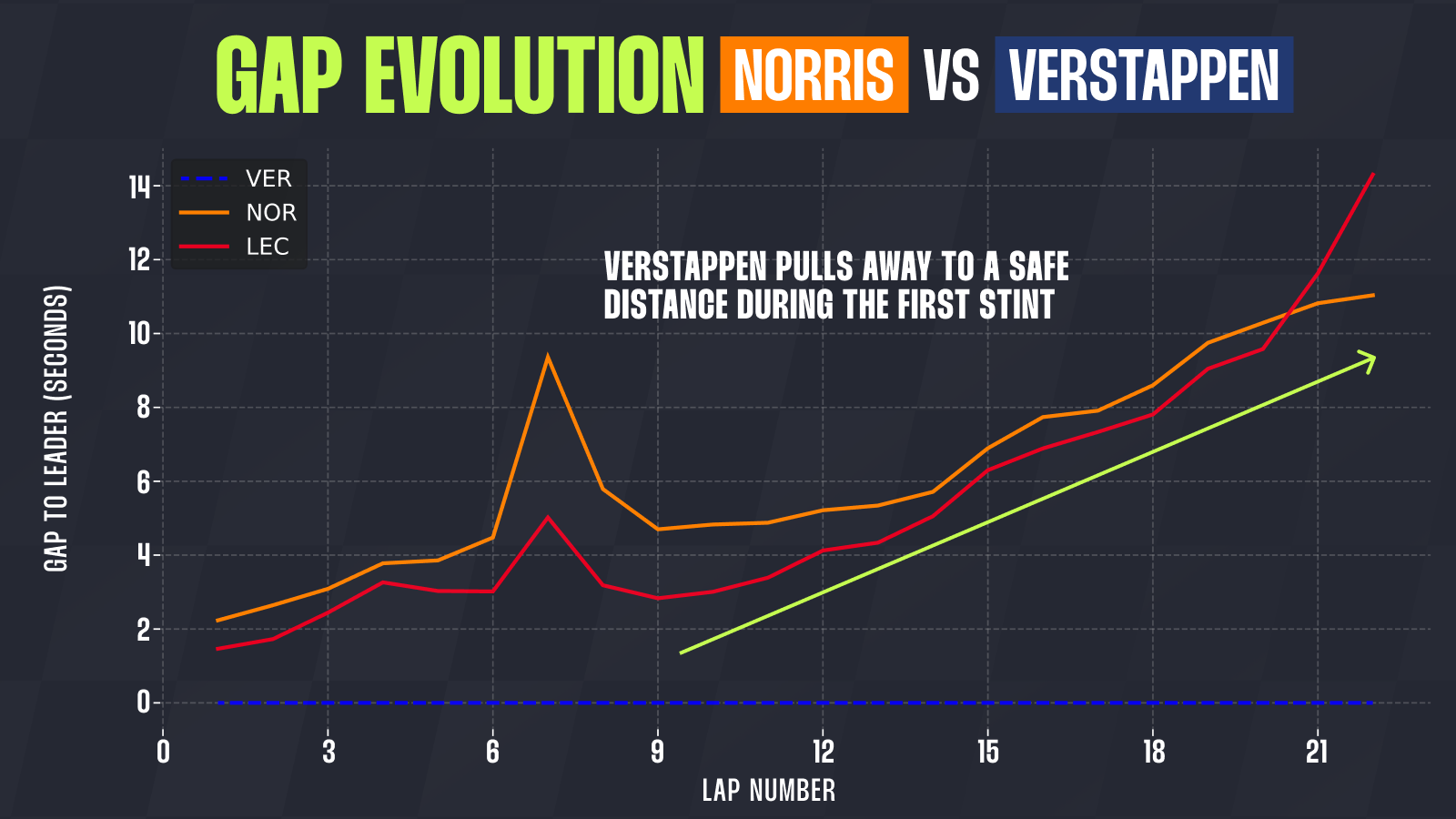
With his soft tyres heavily worn, Leclerc pitted and switched to mediums — a slightly surprising move, as many had expected him to go for the hard compound for the second stint. His decision seemed to influence other teams too, proving that the softs could last around 20 laps in Austin.
On fresh mediums, the Ferrari driver was almost half a second per lap faster than Norris, giving him enough of an undercut advantage to reclaim P2 when Norris eventually made his own stop.
Lando’s initial plan was to stay out on the mediums for as long as possible, but on lap 33 he locked up the front tyres into Turn 12, forcing him to pit immediately.
It didn’t take long for Norris to close back in on the Ferrari and set up another direct fight for P2.
On the first attempt, Leclerc defended strongly again, but the bigger problem for Norris this time was tyre degradation. By lap 40, he reported to his team that the softs were “gone.” He was instructed to back off, get out of the dirty air, and let both the tyres and the car cool down.
It was a smart move. After just three to four laps running over two seconds behind, Norris had recovered enough tyre life to launch another attack — and this time, he was unstoppable.
The graph below shows just how quickly Norris was able to bring his lap times down. When you have that kind of pace advantage, overtaking becomes much easier, especially on a circuit like Austin, which offers several good passing opportunities.
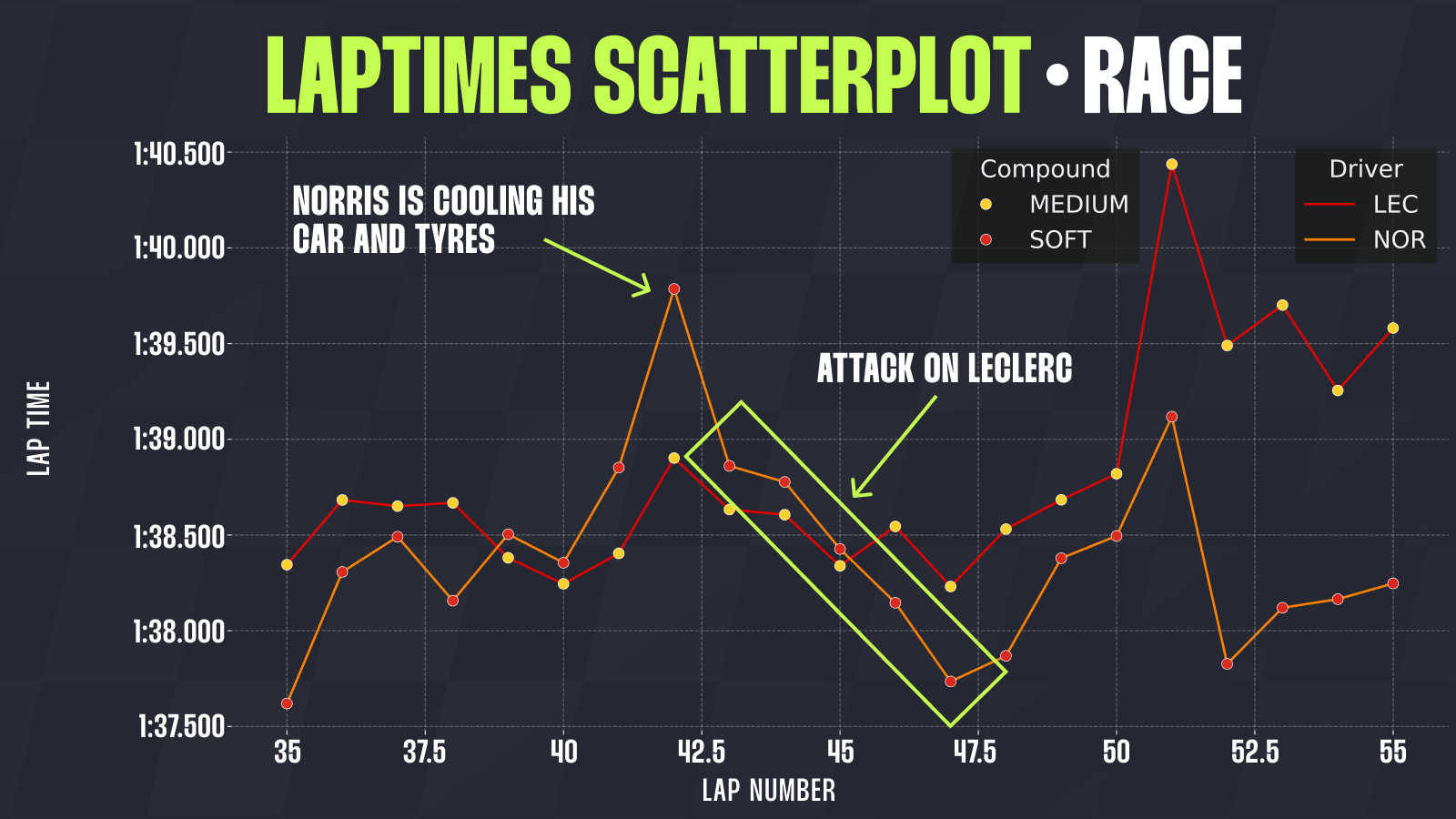
On lap 51, Norris took P2. But with only a handful of laps remaining, the gap Verstappen had built was far too big to close.
Did losing the position at the start cost him the win?
Almost certainly yes. If we look at the lap time differences, Verstappen created his entire winning gap in the first stint — during that initial fight between Norris and Leclerc. From that point on, he simply managed the gap, which isn’t hard to do when you’re leading in clean air.
McLaren clearly had excellent race pace — easily on par with Red Bull. Had Norris held on to P2 through Turn 1, it’s highly likely we would have seen him battling Verstappen instead of Leclerc.
The result of all this is added drama. With the victory in Austin, Max Verstappen is now firmly back in the title fight.
Over the last four race weekends, Max has clawed back 46 points, leaving the gap to current championship leader Oscar Piastri at just 40. With five race weekends and two Sprints remaining, the math is simple: we’re heading for a thrilling end to the season.
Read next: Winners and losers from the 2025 United States Grand Prix



